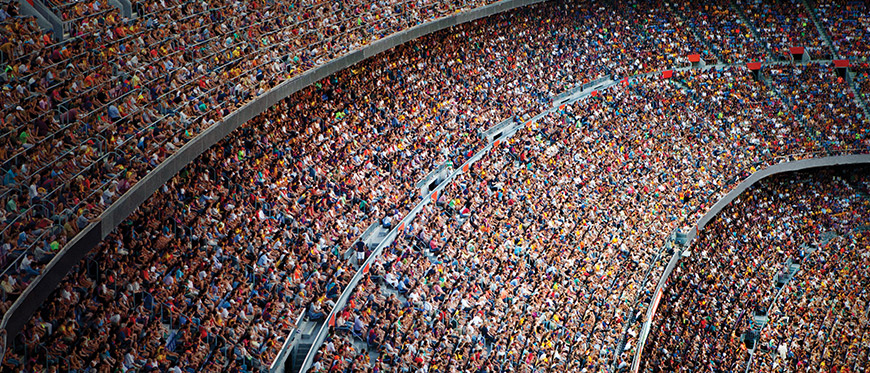Is the stadium business in big trouble, or full of promise for growth? How you answer that question depends on what type of event you’re holding, and how you’re attracting and keeping fans.
If you’re in sports, you’ve been looking at trouble now for several years. Major League Baseball alone saw a million more empty seats in 2018 than in the year before. With the exception of the NBA, every major sports league has seen live attendance decline, and some teams have even begun taking seats out of their stadiums.
So, what’s the difference? Both industries embrace sky-high ticket pricing. Both host big-name events catering to huge fan bases. Both have to compete with the streaming platforms and multi-screen lifestyles that make it much too easy for fans to stay home.
Four keys to keep fans coming to your stadium
A recent survey of sports fans revealed what they want most – in fact, insist on – if they’re going to spend the time and money to attend a live sports event in a stadium.
1. Safety, comfort and cleanliness come first.
As with most aspects of modern life – especially those involving large crowds – people are preoccupied with safety. This is driving a massive upswing in technology-driven stadium security, with innovations ranging from facial recognition that weeds out known troublemakers to security gates that can detect contraband via body scans without requiring fans to stop as they enter.
Comfort and cleanliness are inseparable. They are also incredibly hard to keep up with during sporting events, when fans typically crowd restrooms and common areas all at the same time. Technology is helping out here, too, with data-driven cleaning platforms that tell you when you’re about to run low on supplies, high-capacity hand towel dispensers that reduce the number of times you need to refill, and even hand towel recycling services that provide an extra incentive for fans to put used towels in a proper container rather than on a floor or overflowing waste bin.
2. Fans need a good view.
People come to see the game, but not every seat can provide the same view. Now every fan can, however, get a close-up of plays, and instant replays, streamed right to their mobile devices. And new technologies – like 3D holographic projections and augmented reality apps – have the potential to transform just how a live game is watched.
3. The games themselves must deliver.
Stadium tech may not make the players and coaches better, but it can certainly improve the overall fan experience. For instance, thanks to the Internet of Things and new biometric wearables, fans should soon be able to get real-time reports on exactly how fast a player was just running, or how high they jumped to make that play. Technology, used creatively, can make the in-person experience more immersive and attractive than any other viewing option.
4. The overall stadium atmosphere must be exciting.
In our technology-saturated society, fans may think they’ve seen it all, so your stadium must meet expectations and then take the experience up a notch. Sure, you’ve started serving craft beers and gourmet snacks – but have you considered delivering them by drone? You’ve managed to attract a few tens of thousands of fans – but have you figured out how to personalize their experience, such as letting them follow the game stats of favorite players in real time? With the right combination of technology, creativity and connectivity, there’s virtually no limit to how exciting game day at the stadium can be.
Stadiums are still big business – and just how big your business is depends on how innovative you choose to be.
Sources
Businesswire: Global Smart Stadium Market Report 2019
ThomasNet: Advanced Tech Changing the Game in Stadiums
CBInsights: 50 Startups Tackling Sports Stadium Technology
Bandwagon: Sports attendance is on the decline, but the music industry has it figured out.
Deloitte: Redesigning stadiums for a better fan experience
